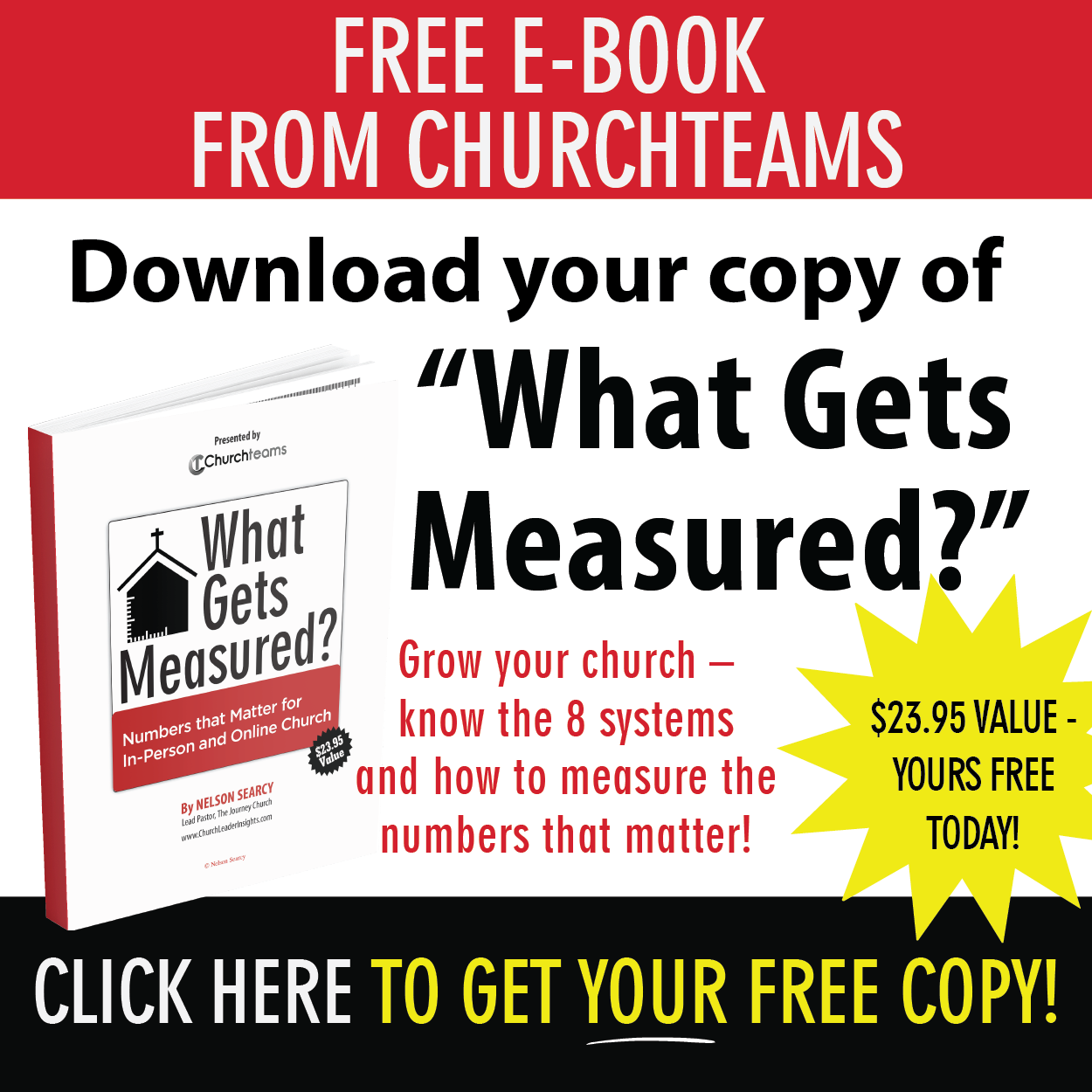 Churchteams started out in 1999 as a tool for making disciples and building teams. A year or so later we were referring to it as a small group software. Within a couple of years it started gaining traction with churches all over the country.
Churchteams started out in 1999 as a tool for making disciples and building teams. A year or so later we were referring to it as a small group software. Within a couple of years it started gaining traction with churches all over the country.
I was a small group pastor at the time and had been for almost a decade. I wasn't new to the challenges of starting and building a small groups ministry, I was exhausted trying to do it. When I understood cloud computing for the first time, I had a hunch this was the answer. And, I had a friend who was willing to pioneer this idea with me using his skills as a software architect. Mark and I have been doing that for 23 years now.
One of the first challenges we wanted to tackle was that of connecting people to small groups. I was tired of collecting cards and trying to connect people to each other. I knew I was the catalyst for connecting, but I also knew I was the bottleneck. There had to be another way. We started referring to this tool as Groupfinder.
Join our team for a small groups briefing August 31st
With lots of trial and error, and input from a large number of small group champions, Groupfinder evolved into a highly effective tool for connection. Recently I was reflecting on lessons we learned during this stage of development and thought it might be helpful to share them. Here they are.
- The filters have to fit the ministry. Whenever someone agrees to lead a group, there has to be a way to communicate the uniqueness of their group. In some ministries the filters are built around curriculum. In others everyone is doing the same curriculum, so the filters are built around age or lifestage. In others, especially home groups, geography is an important group distinctive. Gender and marital status of people in the group are other options. The question I learned to ask staff when they started using Groupfinder was simply, "what questions do you ask when people come to you to find a group?" Whatever their answer is, that's how you customize the filters. Anything else is forced and unnatural for that ministry.
- It has to connect to your website. The website has been the front door of the church for a couple of decades now. Apps are fine for the core people who are committed to your church, but if you want to reach beyond this group, Groupfinder has to link from or embed within your website as well as your app if you have one. Today, you can use the link feature within Text-to-Church to find groups. Text FIND to (817) 677-9850 to see a demo version.
- It has to be intuitive. When people click to see Groupfinder, it has to be obvious what they do next. The filter questions should make it easy for them to quickly sort to the group (s) that best fit them.
- It has to connect people directly to leaders. If you have a closed or a highly controlled small group structure that requires centralized group placement, a form using the same profile questions is sufficient for capturing information. This is work intensive for the staff responsible. However, if set up properly, Groupfinder will streamline a lot of the work for staff. But, if you want people to connect freely, we discovered that if we had the right filters, we could give people direct access to group leaders. I can't tell you how awesome it was to no longer be the bottleneck for ministry!
- Keep leader information secure. We learned really early on that security on the cloud was important. There are people within your church who would love to capture group leader emails for their multi-level or other business marketing. There are people outside your church who would love that information for all kinds of other reasons. You just can't make that openly available on the web. It was a trick for us to learn how to make leaders accessible and still keep their information secure. But, we figured it out.
- Don't provide all the group information. If you provide all the information necessary for someone to join a group, there is no reason for leaders to call or email those who ask about their group. So, leave out specific meeting times and locations. Our mapping feature only allows people to see an area of town where a group meets not the exact address.
- Choose your call to action. There are at least two kinds of people looking for groups: those who are just curious, and those who are ready to join. Providing an option to email leaders helps those not quite ready to commit. Be sure to have an accountability system in place to make sure the leaders actually respond. Providing a registration option essentially enrolls people in a group making them easier to care for and follow up one.
- Require responders to give their information. Whether people just email the leader or they fully register for a group, the form must have at least their name, phone number, and email. Requiring this information is important for security because leaders can establish legitimacy with a personal call. Most importantly this call or email is the next step in relationship develoment.
- Provide organizational structure to direct communication and accountability. If your groups ministry begins to grow and you add a level of coaches or staff, the software has to be able to accommodate this. You don't want every coach getting all the requests from all the groups. You just want coaches getting the information related to their specific groups. This coaching level is the first level of accountability for group leaders. Having coaches in the loop of communication from people reaching out to leaders gives the coach an important and easy reason to connect with their leaders.
- Use groups to provide accountability. For a higher, staff level of accountability for follow up, place people who ask about groups into a group of people looking for groups. Ask volunteers to own these groups as "connectors". Their job is to send follow up emails, text and call leaders and/or inquirers to see how the connection is going. If it was made or the inquirer is no longer interested, connectors remove the person from the group. If not, they redirect them to another group for continued follow-up.
I know ministry ideas and practices are constantly evolving and we keep building and growing as a company to address new needs. But, these are the foundations upon which future ideas and technology will be built. It's not bad to have them all in one place.
Next week I plan to do the same thing on the topic of capturing data in small groups.



